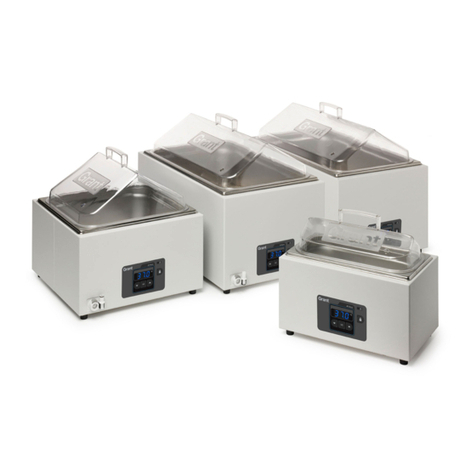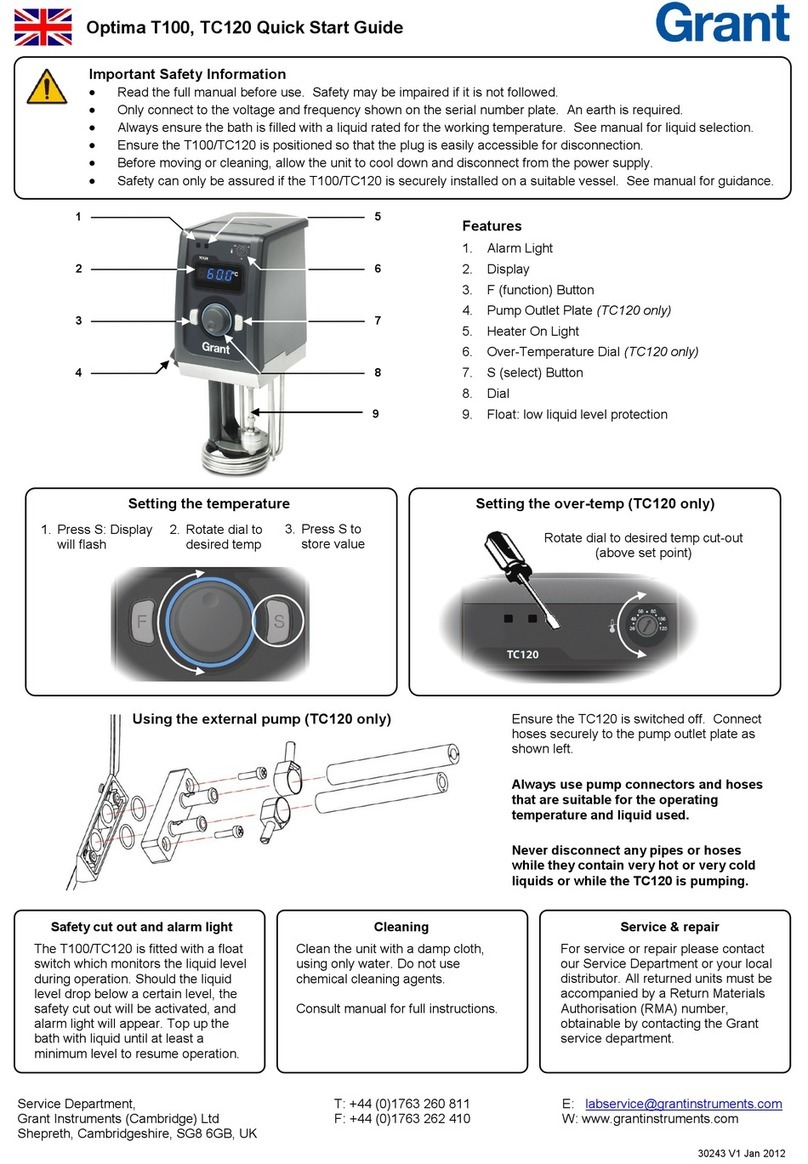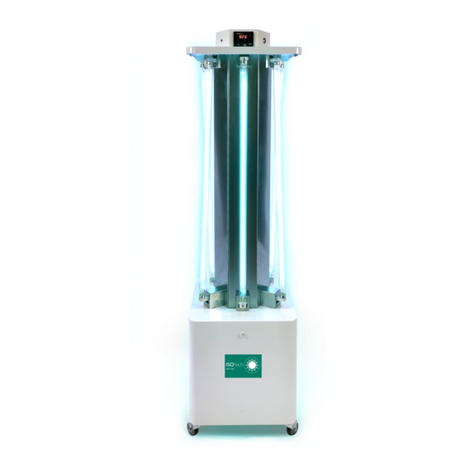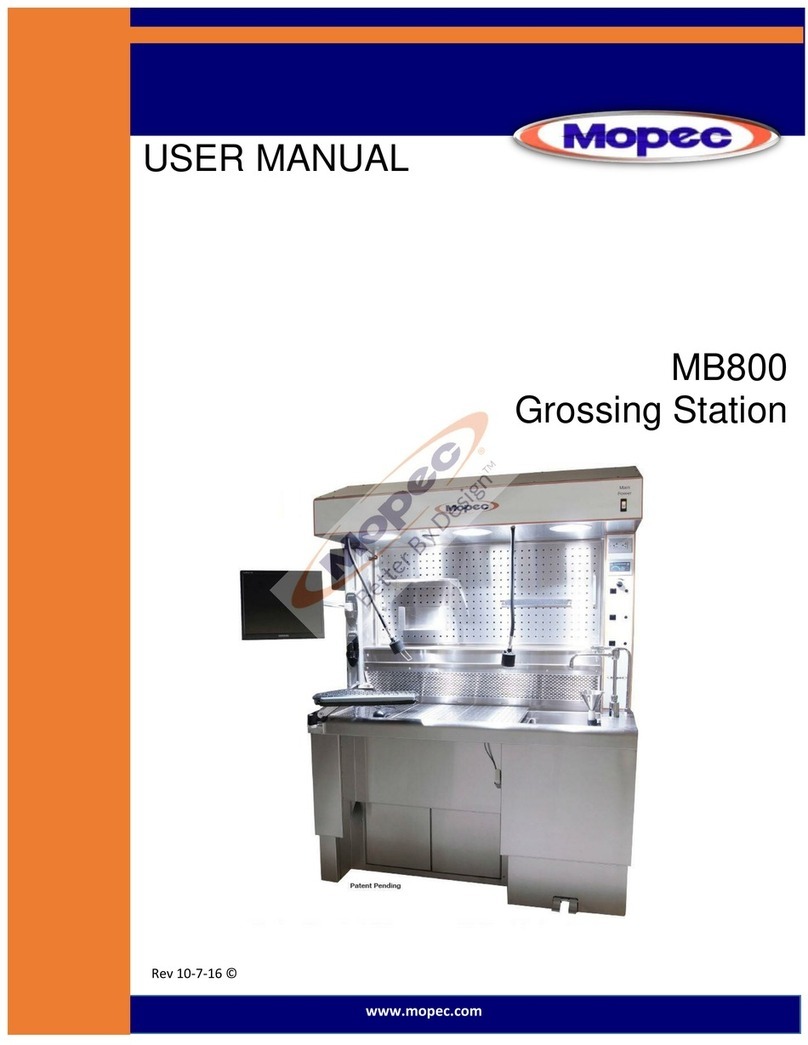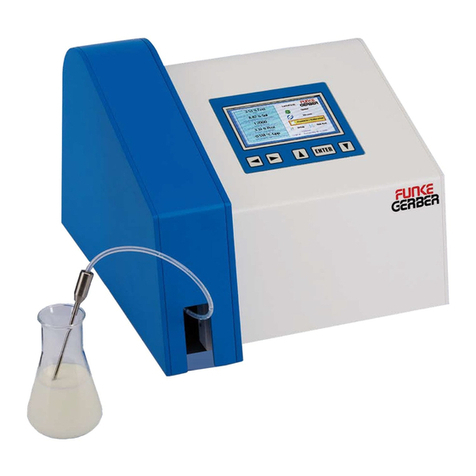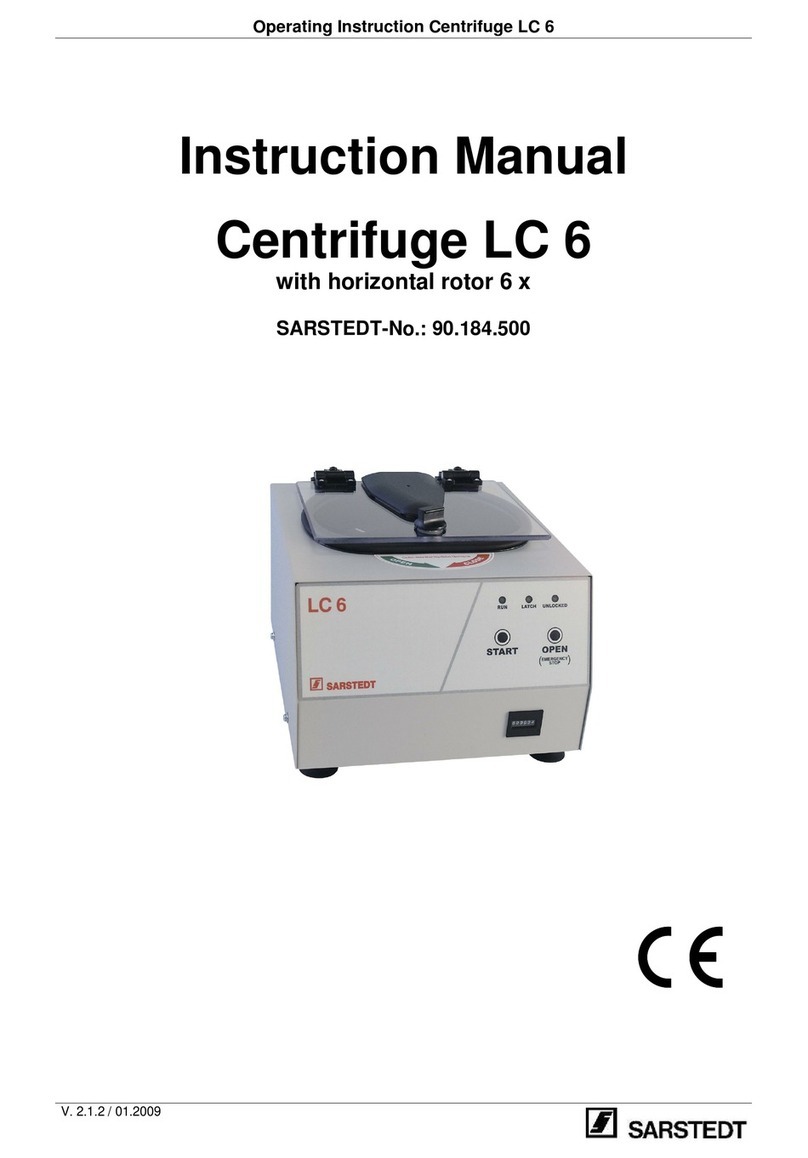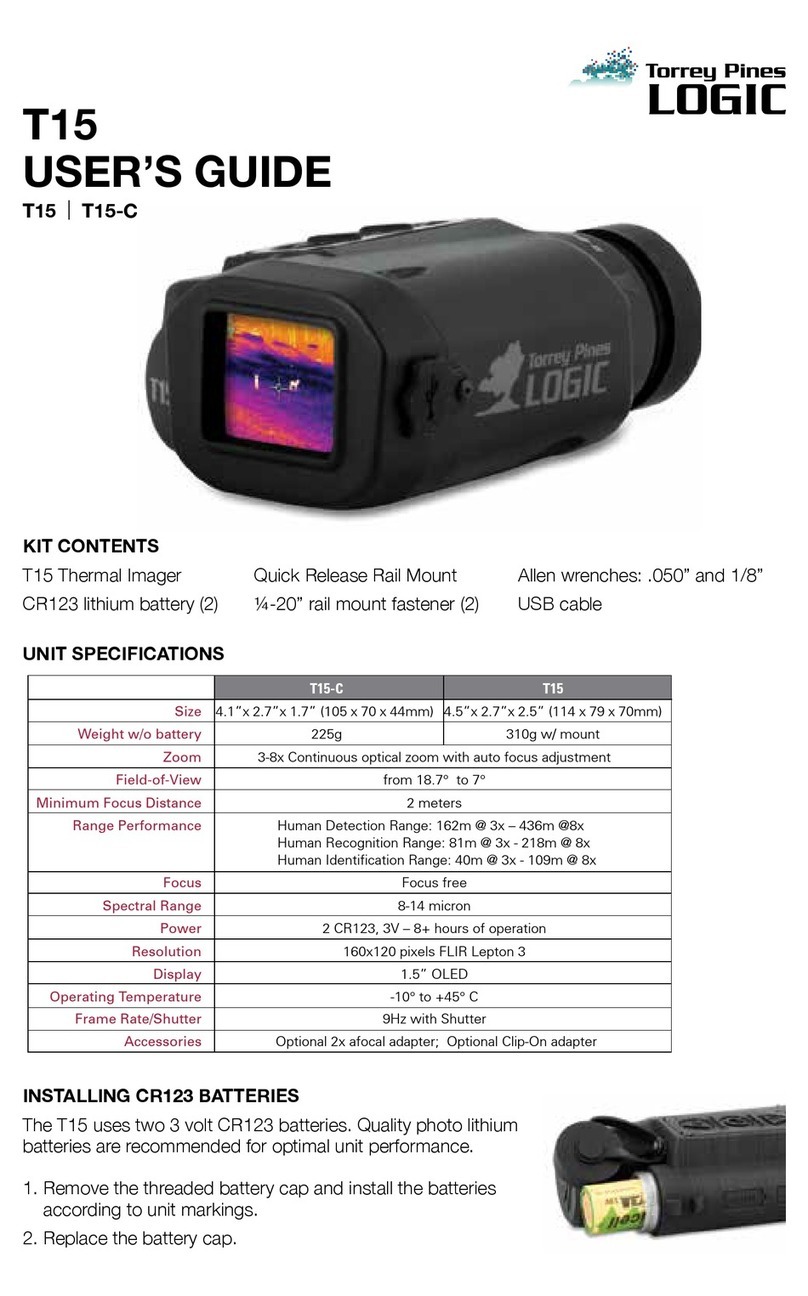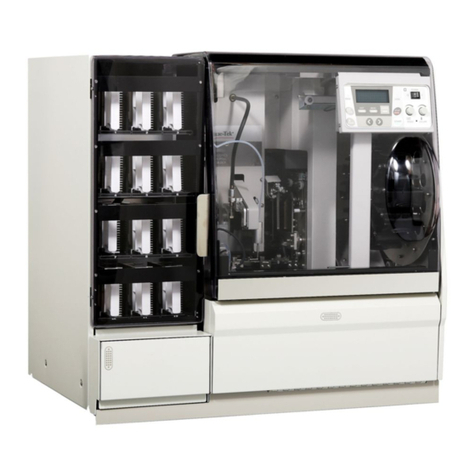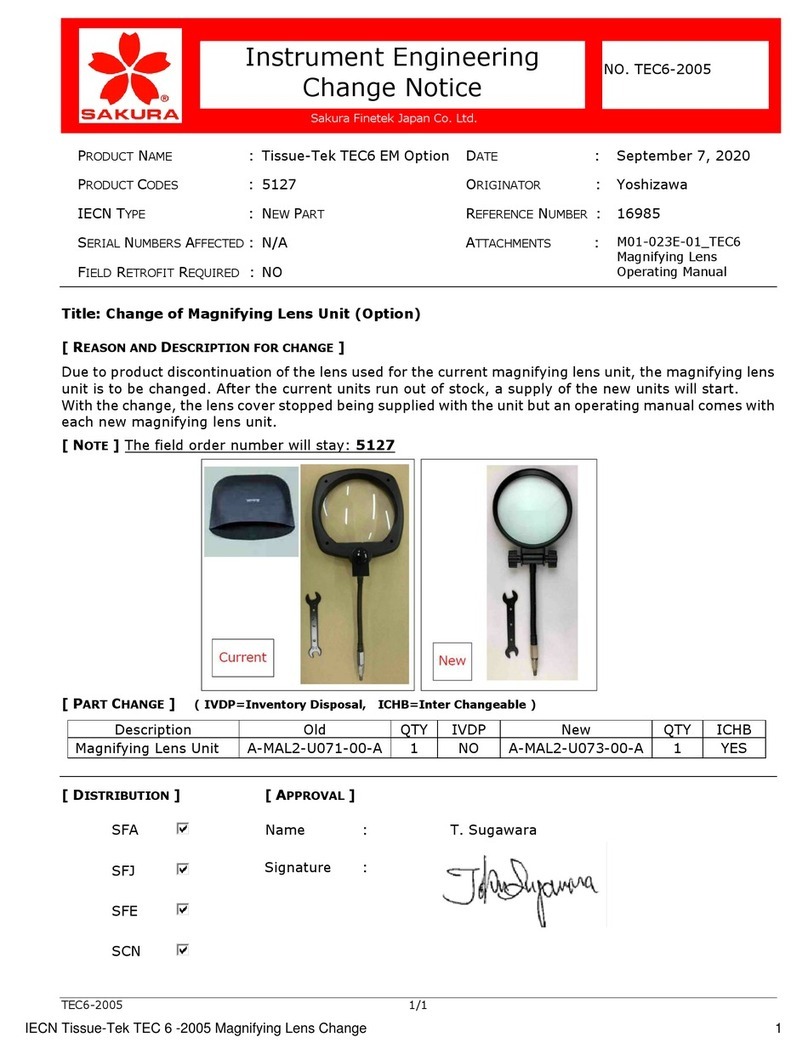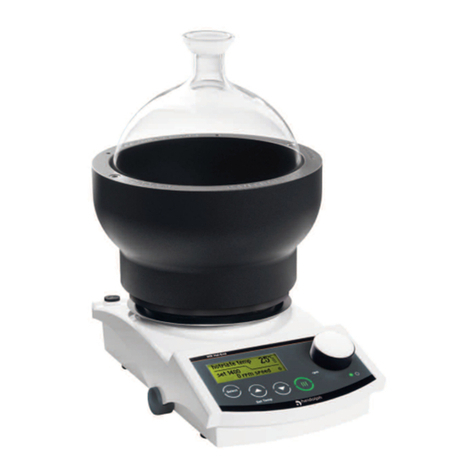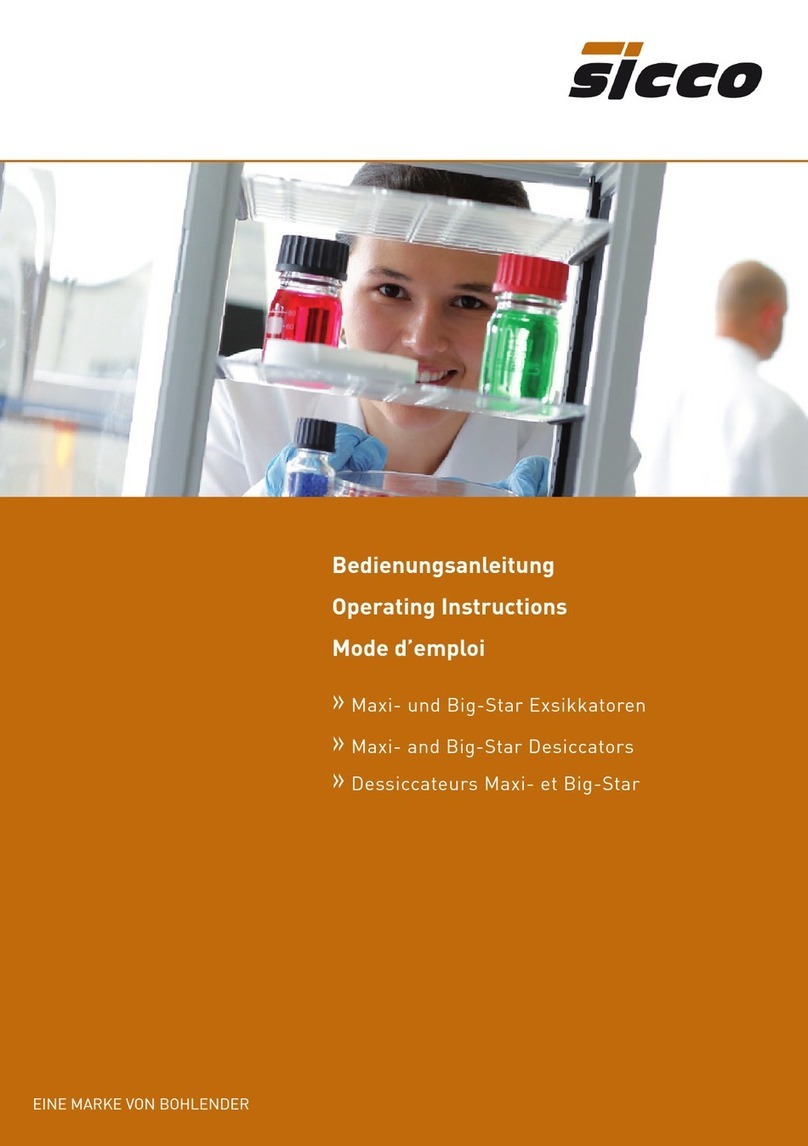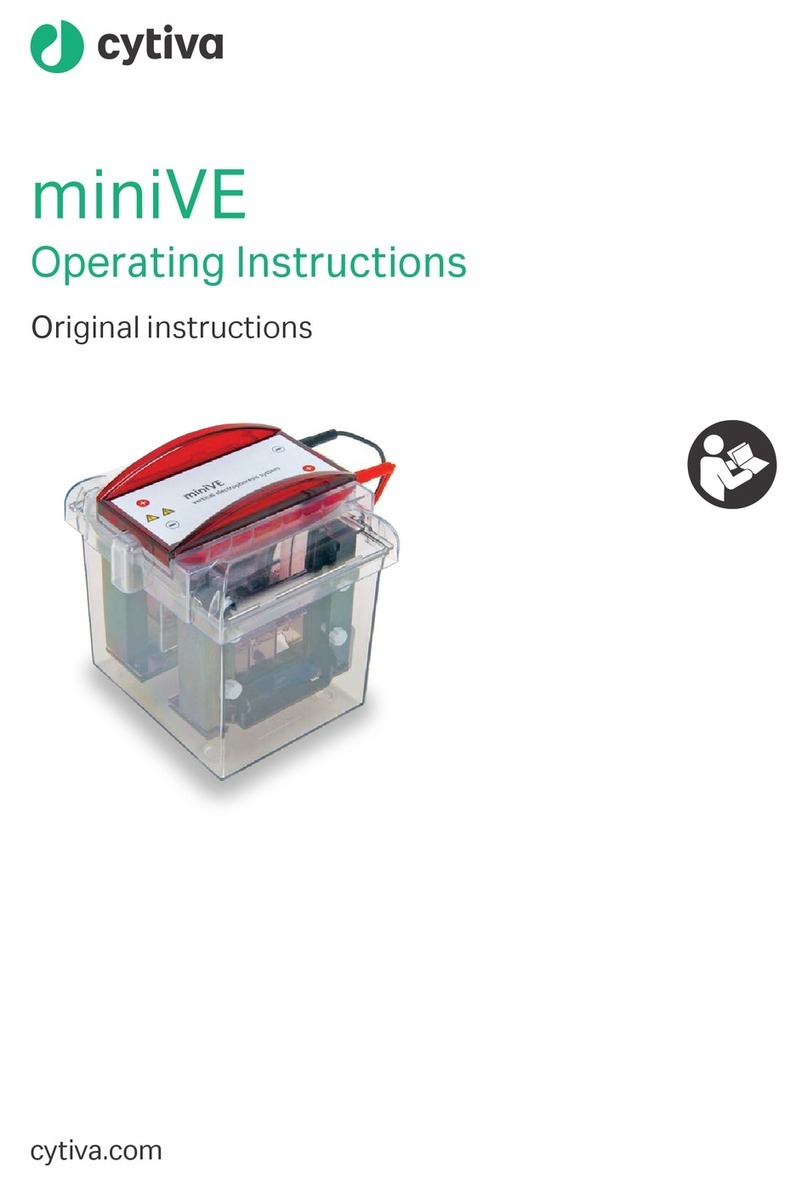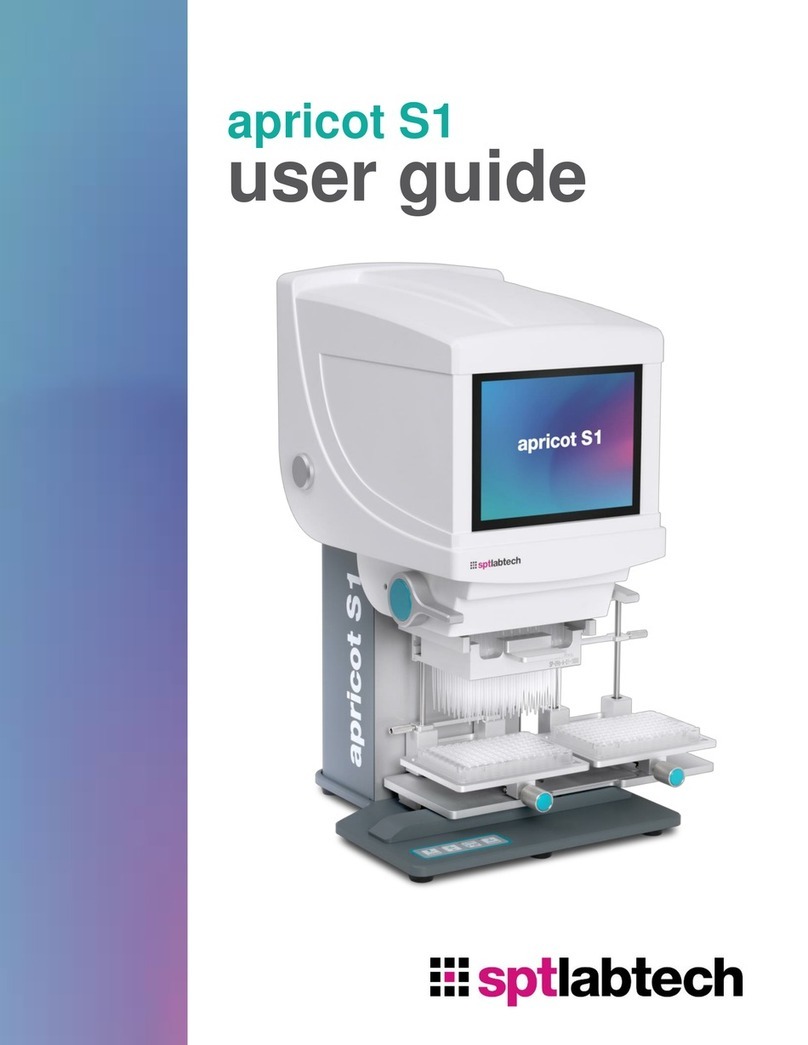Grant GLS Aqua Plus User manual

ES
IT
DE
FR
EN
Shaking Water Bath
GLS Aqua Plus
Operating Manual

29339 Ver. 3 GLS Aqua Plus
Page 1 Operating Manual
www.grant.co.uk
Grant Instruments,based near Cambridge, England, is an independent,
privately owned company, founded in 1951 by Peter Ward and Cecil Chapman.
Grant is a world leader in the manufacture and design of equipment for sample
preparation, scientific analysis, data acquisition and data analysis providing
solutions to the global scientific and industrial markets.
Standards Compliance and Quality
Grantsiability and accuracy.
We ensure our products stringently meet all necessary international safety
standards.
We pay particular attention to the safety testing of products and remain at the
forefront of the product safety standard for laboratory equipment IEC 61010-1.
The company is committed to operating its safety test laboratory in accordance
with the requirements of ISO 17025.
Grant operates a Quality Management System that complies with the
requirements of BS EN ISO 9001:2008.
Beyond compliance to the standard, Grant is committed to continually improving
in everything we do; with particular emphasis on understanding what matters to
our customers and suppliers, and designing our systems and work to meet their
needs.
If you have any feedback on Grants products or services we would like to hear
from you. Please send all feedback to:
Quality Manager
Grant Instruments (Cambridge) Ltd
Shepreth
Cambridgeshire
SG8 6GB
England
Tel: +44 (0) 1763 260 811
Fax: +44 (0) 1763 262 410

GLS Aqua Plus 29339 Ver. 3
Operating Manual Page 2
www.grant.co.uk
EN
Contents
1.0 Use of products 3
2.0 How to use this operating manual 3
3.0 Safety information 3
3.1 Safety compliance 3
3.2 Safety symbols 4
3.3 Safety warnings 4
4.0 Operating instructions 5
4.1 Unpacking instructions 5
4.2 Assembly of the equipment and components 5
4.3 Installation 6
4.4 Electrical supply 6
5.0 Operating procedures 7
5.1 Operation 7
5.1.1 Water level 7
5.1.2 Operation above 60°C 7
5.1.3 Use as a thermostatic bath without shaking 7
5.1.4 Emptying the baths 7
5.2 Using the GLS Aqua Plus 8
5.2.1 Bath controls 8
5.2.2 Setting the control temperature 8
5.2.3 Setting the shaking speed 9
5.2.4 Starting & stopping shaking 9
5.2.5 Setting the sample protection thermostat 9
5.2.6 Configuring a bath preset 10
5.2.7 Running a bath preset 10
5.2.8 Setting a countdown period 10
5.2.9 Cancelling the timer 11
5.2.10 Locking & unlocking the control panel 11
5.2.11 Single point calibration 11
5.2.12 Twin point calibration 11
6.0 Technical specifications 13
7.0 Technical Tips 13
7.1 Which water should you use in your bath? 13
7.2 How to prevent rust in water baths 14
7.3 How to prevent algae and bacteria? 14
8.0 Warranty information 15
9.0 Maintenance and service 15
9.1 Cleaning 15
9.2 Fuses 15
9.2.1 Replacing fuses on GLS Aqua Plus 15
9.2.2 Routine safety tests 16
9.3 Service 16
10.0 Optional accessories 16
11.0 Troubleshooting 16
12.0 Contact Grant Instruments 17
13.0 Compliance 17

29339 Ver. 3 GLS Aqua Plus
Page 3 Operating Manual
www.grant.co.uk
1.0 Use of products
The following products are covered by this operating manual:
GLS Aqua (12 and 18) Plus
The products listed above are a general purpose series of thermostatically controlled
shaking water baths designed for indoor laboratory use by a professional user.
2.0 How to use this operating manual
This operating manual will allow you to unpack, set-up and operate this water bath
correctly and safely. Important safety information, symbols and warnings are listed below
and should be read carefully. Section 4 gives information about how to unpack and install
the product correctly. Section 5 gives generic operating information in the first section
followed by specific operating details for the GLS Aqua Plus baths. Product technical
specifications and tips are provided in the sections 6 and 7. The warranty for this water
bath is detailed in section 8 but to register you should return the warranty card or
complete the on-line registration form at www.grant.co.uk.
If there is a technical matter that this operating manual does not address, or any other
question concerning this product please contact Grant Instruments or your local
distributor who will be able to provide any additional information.
A laminated quick start guide is provided with the baths as quick reference guide but
should not be used until the full user manual has been read.
3.0 Safety information
3.1 Safety compliance
Grant water baths meet the requirements of international safety standard IEC 61010-2-
10 and IEC 61010-2-51 and national standards based on them including:
UL 61010A-2-010
UL 61010-2-051-04
CAN/CSA-C22.2 NO. 61010-2-010-04
CAN/CSA-C22.2 No. 61010-2-051

GLS Aqua Plus 29339 Ver. 3
Operating Manual Page 4
www.grant.co.uk
EN
3.2 Safety symbols
The symbols below are marked on the equipment to indicate:
Caution: Surfaces and water can be hot during and after use
Read this manual before using the bath
Important safety warning
3.3 Safety warnings
Read the whole of these instructions. Safety may be impaired if they are not
followed.
If the equipment has been transported or stored in cold or humid conditions,
condensation may form inside it. If that could have happened, allow time (at
least 2 hours at room temperature) for the condensation to evaporate before
using the equipment.
Do not use the bath to heat any material that could cause a fire or any other
kind of hazard.
Do not use the equipment in an area where there are hazardous or explosive
chemical mixtures or atmospheres.
If a potentially hazardous liquid is spilt onto the equipment, disconnect it from
the power supply and have it checked by a competent person. It is the user's
responsibility to carry out appropriate decontamination if hazardous material is
spilt on the equipment.
Before emptying a bath, allow the water temperature to fall to a safe level. For
12 and 18 litre baths, empty the bath before moving it.
The shaking speed will revert to previously set value when reconnected after
power interruption.
The protection provided by the equipment may be impaired if it is used with
accessories not provided or approved by Grant.
The bath is for use only with water as the bath liquid. Make sure that it cannot become
contaminated by other liquids. We recommend the use of de-ionised water.
Before first switching on the bath please remember to fill the bath with water. Switching
the bath on dry will damage the heater and could invalidate the product warranty.

29339 Ver. 3 GLS Aqua Plus
Page 5 Operating Manual
www.grant.co.uk
4.0 Operating instructions
4.1 Unpacking instructions
Standard equipment includes:
Thermostatic bath
Mains cord with plug
Gabled polycarbonate lid
Drive magnet
Shaking trolley
Operating manual
Quick start guide
Remove packing materials carefully, and retain them for future shipment or storage of the
equipment.
4.2 Assembly of the equipment and components
The water bath has four main components, the bath, the lid, the tray (supplied
separately) and the shaking mechanism. The lid should only be lifted by the handle
provided as other parts can become hot during use. It also has a vent/thermometer hole -
this hole should not be sealed as pressure could build up inside the bath.
The shaking mechanism and tray should be fitted as follows
1. Put the drive magnet into the hole in the base of the tank.
2. Place the shaking trolley in the tank with the axles parallel to the front panel, and
with the peg of the drive arm in the hole in the top of the drive magnet.
3. Place the shaking tray on the shaking trolley (see diagram below showing the
universal plain tray).

GLS Aqua Plus 29339 Ver. 3
Operating Manual Page 6
www.grant.co.uk
EN
4.3 Installation
Place the water bath on a level, non-combustible surface. Ensure that the mains plug
and the switch are easily accessible.
4.4 Electrical supply
Check that the supply voltage marked on the serial number label, and the type of mains
plug, are correct for your mains supply outlet, which must have a ground connector.
To disconnect the equipment from the mains supply, remove the mains plug from the
mains supply outlet.

29339 Ver. 3 GLS Aqua Plus
Page 7 Operating Manual
www.grant.co.uk
5.0 Operating procedures
5.1 Operation
5.1.1 Water level
Ensure that the baths are used with the shaking tray in place and that the water always
covers the tray. The maximum water level should not be higher than the swage line
around the top of the bath (around 2.5cm from the top). These criteria apply both when
there are no vessels in the bath and with the maximum contents. Note that water level
may have to be reduced at higher shaking speeds to prevent spillage and stalling of the
mechanism.
Avoid letting the bath run dry. In the event this does happen, the safety cutout will trip
and disconnect the heater. If this does happen, unplug the bath and have the cut-out re-
set by a competent person.
5.1.2 Operation above 60°C
The lid must be used above 60°C to maintain proper temperature control and to ensure
that the water temperature reaches the set point
The lid will also prevent excessive evaporation that requires the bath to be filled more
often and will save energy
5.1.3 Use as a thermostatic bath without shaking
If the shaking trolley and drive magnet are lifted out, a shaking bath can be used as a
simple thermostatic bath. When used in this way, if flat bottomed vessels or objects are
to be placed in the bath, always use a raised base tray (optional accessory) to avoid
damage to the under-tank heater.
5.1.4 Emptying the baths
Before emptying any bath allow the water temperature to fall to a safe level and take
reasonable precautions to prevent accidental spillage.
Drain taps are included in both baths to allow convenient emptying. These baths should
be emptied using the drain tap prior to moving. To empty the bath using the drain tap,
push the supplied drain insert into the drain tap (see picture below). Note that the water
will begin to empty from the bath as soon as the drain insert is fully engaged. A length of
hose can be added to the barbed end of the drain insert if required.

GLS Aqua Plus 29339 Ver. 3
Operating Manual Page 8
www.grant.co.uk
EN
5.2 Using the GLS Aqua Plus
5.2.1 Bath controls
5.2.2 Setting the control temperature ( )
The water temperature of the bath can be set using the control keys.
1. Turn the knob of the sample protection thermostat to maximum.
2. -
will cause the display to flash indicating that it can be set.
3. -to set the desired temperature.
If no key is pressed for 4 seconds then the display will revert back to showing the bath
temperature and the set temperature will remain at its original value.
4. Press the enter key to store the requested value and the display will revert to showing
the bath temperature.
The water temperature will change to the new set value - during heating or cooling to
the set point the last digit will change to a rising or falling bar until the actual
temperature is within one degree of the set value.
5. When the temperature has stabilised measure the temperature with a thermometer
and adjust the set temperature again if necessary.
6. Set the sample protection thermostat as detailed below if needed.
Sample
protection
thermostat
Preset keys
Display
Control keys
Start/stop shaking key

29339 Ver. 3 GLS Aqua Plus
Page 9 Operating Manual
www.grant.co.uk
5.2.3 Setting the shaking speed
The shaking speed of the bath can be set using the control keys
1. Press the enter key to show ' '.
2. -navigate to the animated tray option:
3. Press the enter key to select the shaking speed; the display will show the present
shaking speed.
4. -et the shaking speed in strokes/min.
The shaking will respond as the value changes.
5. Press the enter key to set the shaking speed to the new value.
If no key is pressed for 4 seconds then the display will revert back to showing the
bath temperature and the shaking speed will remain at its original value.
The maximum speed for a particular application will depend on number and size of
vessels, and the depth of the water. The shaking trolley is driven by a drive magnet
under the tank, magnetically coupled to the trolley through the tank. As the speed is
increased a point is reached where the magnetic coupling de-latches, causing the trolley
either to move erratically or to stop.
5.2.4 Starting & stopping shaking
The stop shaking
function stops the tray immediately whereas the start shaking function ramps up the
start shaking the current speed setting is displayed briefly on the display.
5.2.5 Setting the sample protection thermostat
The bath is fitted with an adjustable sample protection thermostat to protect the sample.
This device is not a safety feature. The sample protection thermostat can be set to be a
few degrees above the bath set temperature.
1. Turn the knob of the sample protection thermostat to maximum.
2. Set the control temperature to 2°C above the desired operating temperature and wait
for the temperature to stabilise.
3. Turn the knob of the sample protection thermostat slowly anti-clockwise until a click is
The audible alarm will sound continuously to warn you that the bath is controlling
using the sample protection thermostat.
4. Re-set the control temperature to the desired temperature usi-
The audible alarm will sound continuously until the primary control system is re-
activated.
In the unlikely event of failure of the primary temperature control system, the sample
protection thermostat will maintain the water in the bath at a temperature a few degrees
above the set temperature and with greater fluctuations. The display will cycle between
this happens, first check that the sample protection thermostat is not set to a lower
temperature than the primary control system. If that is not the reason, the bath can
continue to be used without compromising the safety of persons or the surroundings until
current work is completed. However, it is recommended to have the bath checked by a
competent person as soon as conveniently possible.

GLS Aqua Plus 29339 Ver. 3
Operating Manual Page 10
www.grant.co.uk
EN
5.2.6 Configuring a bath preset
Each bath contains two presets which can be configured to different set temperatures
and shaking speeds to allow the bath to be conveniently run under frequently used
conditions. Use the method below to configure preset 1; other presets can be set in a
similar manner.
1. Press preset key '1' to activate the preset temperature setting. The display will flash
' ' and then the current preset set temperature.
2. -to set the desired temperature.
If no key is pressed for 4 seconds then the display will revert back to showing the
bath temperature and the set temperature will remain at its original value.
3. Press preset key '1' to save the preset temperature.
4. Press preset key '1' twice to activate the preset shaking speed setting. The display
will flash ' ', then and finally the current preset shaking speed
5. -to set the desired shaking speed.
If no key is pressed for 4 seconds then the display will revert back to showing the
bath temperature and the set temperature will remain at its original value.
6. Press preset key '1' to save the preset shaking speed.
5.2.7 Running a bath preset
To run bath preset 1:
1. Press preset key '1' to activate the preset. The display will flash ' ' and then the
current preset set temperature.
2. Press the enter key to run the preset; the bath will heat (or cool) to the requested
temperature.
5.2.8 Setting a countdown period ( )
The bath includes a countdown timer in minutes which triggers an audible alarm on
completion.
1. Press the enter key to show ' '.
2. -navigate to ' '.
3. Press enter key to select the countdown timer; the display will flash ' '.
4. -et the countdown timer in minutes.
5. Press the enter key to confirm the countdown timer.
If a timer has been set then a dot in the bottom right corner of the display will flash
during the countdown.
When the countdown timer reaches zero the audible alarm will sound and the display will
alternate between the water temperature and zero. The alarm can be accepted by
pressing the enter key.

29339 Ver. 3 GLS Aqua Plus
Page 11 Operating Manual
www.grant.co.uk
5.2.9 Cancelling the timer
The countdown timer can be cancelled by using the instructions above but using the '-'
key to reset the value to zero. Use the enter key to confirm that you wish to clear the
timer.
5.2.10 Locking & unlocking the control panel
The keys on the front panel can be locked to prevent settings being accidentally changed
panel is locked.
-ltaneously for at
5.2.11 Single point calibration ( )
The display of set temperature and actual temperature is accurate to within 1°C at 37°C
but may be up to 5°C out at maximum temperature. Single point calibration allows the
bath to be adjusted to be accurate to ±0.1°C at a single temperature.
1. '.
2. -navigate to ' '.
3. Press enter key to select calibration; the display will flash with the current offset
value.
4. -set an offset correction value (positive or negative) as
measured by a thermometer.
If no key is pressed for 8 seconds then the display will revert back to showing the
bath temperature and the calibration will remain at its original value.
5. Press the enter key to store the new corrected set temperature.
The display will show the corrected bath temperature.
5.2.12 Twin point calibration ( )
The bath can also be calibrated using a twin point method to give you a linear correction
over the full temperature range. The process consists of three steps:
1. Set low point calibration value.
2. Set high point calibration value.
3. Confirm calibration settings.
The bath is not calibrated until all three steps have been completed. The greater the
difference between the low and high points, the better the calibration will be.
Low calibration point ( )
1. Set the bath to a temperature between 20°C and 40°C and allow the bath to stabilise,
indicated by the display not fluctuating by more than 0.2°C.
2. Measure the temperature of the water with a calibrated thermometer and make a
note of this reading.
3.
4. Use -navigate to
5. - navigate to
6. - value displayed is the same as the
reading taken earlier.

GLS Aqua Plus 29339 Ver. 3
Operating Manual Page 12
www.grant.co.uk
EN
7. Press the enter key to confirm the value and the bath will display ait for the
bath to return to normal mode.
High calibration point ( )
1. Set the bath to a temperature between 70°C and 90°C, allow the bath to stabilise,
indicated by the display not fluctuating by more than 0.2°C.
2. Measure the temperature of the water with a calibrated thermometer and make a
note of this reading.
3.
4. -navigate to
5. - navigate to
6. -
reading taken earlier.
7. Press the enter key to confirm the value and the bath will display ait for the
bath to return to normal mode.
Setting the calibration ( )
1. Press the enter key. The display will
2. -navigate to
3. - navigate to apply the new
low and high calibration values.
The bath is now calibrated and the display will read the corrected value.
Restoring factory calibration ( )
1. Press the enter key. The display will
2. -navigate to press the enter key.
3. -
factory settings.

29339 Ver. 3 GLS Aqua Plus
Page 13 Operating Manual
www.grant.co.uk
6.0 Technical specifications
Operating conditions
Ambient Temperature
5 to 40°C
Maximum relative humidity
80% R.H. in room temperatures up to 31°C
decreasing linearly to 50 % R.H. at 40°C
Altitude above sea level
Up to 2,000 m (6,500 ft)
Operating Enviroment
Indoor use only
Electrical details
Mains supply: 230V @ 50/60 Hz or 120V @ 50/60 Hz
Pollution degree: 2
Installation Category: II
Note: Mains supply voltage fluctuations are not to exceed ±10% of the nominal supply
voltage.
Models
Capacity (L)
Current Rating (A)
120V
230V
GLS Aqua 12 Plus
12
5.8
2.8
GLS Aqua 18 Plus
18
8.5
5.4
GLS Aqua Plus bath performance
Temperature range
5°C above ambient to 99°C
Shaking speed range
40 to 400 strokes/min
Display (also used for setting)
10.0 to 99.0°C in steps of 0.1°C
Temperature stability to DIN 12876
± 0.2°C
The maximum shaking speed for a particular application will depend on the number and
size of vessels in the shaking tray, and the depth of the water.
7.0 Technical Tips
7.1 Which water should you use in your bath?
For the long-term reliability of water baths it is important to use oxygenated water that is
free from ions and minerals that can cause corrosion of stainless steel. We recommend
the use of distilled water and de-ionised water from modern ion exchange systems that
do not use salt back flushing to regenerate the ion-exchange cartridges.
Stainless steel is protected from corrosion by a layer of chromium oxide. If the layer is
damaged, oxygen present in water can reform the oxide layer. If the water is still or de-
oxygenated, and the oxide layer is damaged, ions can corrode the stainless steel tank. If
a water bath has been unused for some time, or water boiled, we recommend changing
to fresh distilled water or correct de-ionised water.
Water normally contains calcium or magnesium ions. De-ionised water has most ions
removed as indicated by its conductivity level; the purer the water the lower the
conductivity. It is important to use only de-ionised water from an ion exchange system
with replaceable cartridges. Do not use de-ionised water generated from an ion-

GLS Aqua Plus 29339 Ver. 3
Operating Manual Page 14
www.grant.co.uk
EN
exchange system that incorporates a salt back-flush system to regenerate the ion-
exchange resin as this can leave sodium ions that are very corrosive to stainless steel.
7.2 How to prevent rust in water baths
Most Grant tanks, as well as immersed parts, are made from type 304 stainless steel, an
extremely versatile general purpose grade of stainless steel. It is the excellent forming
characteristic that has made this grade dominant in the manufacture of laboratory and
industrial water baths, as well as domestic sinks and saucepans. Type 304 stainless
steel is highly suitable for applications where hygiene is important; it exhibits good heat
resistance and excellent resistance to corrosion.
However, despite resistance to general surface corrosion, stainless steel is susceptible to
specific types of corrosion, in particular pitting (small pin hole style corrosion) and stress
corrosion cracking. It can also undergo general corrosion in specific environments, such
as one containing hydrochloric or sulphuric acids.
Stainless steel is protected by its high content of alloying elements, primarily chromium
and nickel. Chromium is the most important with respect to corrosion resistance,
although the nickel assists in allowing the chromium to do its job. The chromium forms an
oxide layer on the surface of the steel, which inhibits further oxidation. This layer adheres
extremely well to the metal substrate, but it is essential that it remains intact, and must be
protected from various forms of damage.
If the surface chromium oxide layer becomes damaged, oxygen present in water can
partially reform the oxide layer, so it is advisable to ensure that water is always fresh and
well oxygenated. Baths that will be out of use for an extended period should be emptied,
and all moisture should be wiped from the bottom of the tank.
In some cases a brown layer may appear on the surface of a stainless steel tank. In most
of these cases this is not rust, but it may be a surface deposit of minerals from the local
water supply, or ferrous particles or salts that have fallen into the tank. These surface
deposits can usually be removed by using a household cleaner such as Duraglit or Silvo
metal polish.
7.3 How to prevent algae and bacteria?
Water baths provide the ideal environment for the growth of micro-organisms. If left
uncontrolled the growth of these organisms can result in a range of serious problems and
health risks from pathogenic bacteria.
The growth of algae on the surface of parts will cause biofouling which can reduce
performance.
Micro-organisms that produce acidic metabolic by-products can cause bio-corrosion by
depolarisation of metal surfaces.
There are a number of biocides available on the market.

29339 Ver. 3 GLS Aqua Plus
Page 15 Operating Manual
www.grant.co.uk
8.0 Warranty information
When used in laboratory conditions and according to these working instructions, this
product is guaranteed for THREE YEARS against faulty materials or workmanship.
Extended warranty for years four and five can be purchased by contacting our sales
department at labsales@grant.co.uk.
9.0 Maintenance and service
No routine maintenance is required except for cleaning. There are no user serviceable
parts inside the unit.
9.1 Cleaning
Clean the outside of the equipment with a damp cloth, using water only. Do not use
chemical cleaning agents. Before using any other cleaning or decontamination method,
check with Grant Instruments or your local representative to make sure that the proposed
method will not damage the equipment.
Scale on immersed parts can be removed using chemical de-scaling products designed
for use on kitchen equipment that have metal parts. De-scaling products may be toxic
9.2 Fuses
Fuses are Littelfuse 3AB 314 series, fast-acting, high breaking current (max breaking
current at least 750 A); dimensions are 1.25 inch long, 0.25 inch diameter. Replace fuses
only by the same type and rating (250V).
Models
Fuse Rating (A)
120V
230V
GLS Aqua 12 Plus
10
10
GLS Aqua 18 Plus
15
15
9.2.1 Replacing fuses on GLS Aqua Plus
Disconnect the unit from the power supply
1. Remove the mains lead from the socket at the back of the bath.
2. Press down the fuse drawer catch and pull out the fuse drawer. Check the fuse(s)
and replace if necessary using the specified fuse type and rating.
3. Push back the drawer and replace the mains lead.

GLS Aqua Plus 29339 Ver. 3
Operating Manual Page 16
www.grant.co.uk
EN
9.2.2 Routine safety tests
If routine tests are to be made, we recommend a test of the integrity of the protective
earth conductor and an insulation test at 500 V DC. Routine flash tests are not
recommended for any electrical equipment, because repeated high voltage tests degrade
insulation materials.
9.3 Service
If service is required, switch off the unit and contact Grant Instruments or your local
representative for repairs.
Service Department
Grant Instruments (Cambridge) Ltd
Shepreth
Cambridgeshire
SG8 6GB
England.
Tel: +44 (0) 1763 260 811
Fax: +44 (0) 1763 262 410
E-mail: labservice@grant.co.uk
10.0 Optional accessories
A full listing of product accessories and options is available in the Grant Scientific
Reference Catalogue (a copy of which is available upon request) and on the Grant
website at www.grant.co.uk.
11.0 Troubleshooting
No lights or display - check power source, mains switch and fuses.
Water is not reaching temperature - check that the set temperature and the sample
protection thermostat are set correctly.
Display shows ‟ ‟ - check that the sample protection thermostat is set correctly.
Display temperature is different from actual temperature - use single ( ) or twin
point calibration ( ) to correct this.
There is no last digit on the display - allow the bath to stabilise.
Temperature of water fluctuates - check that the sample protection thermostat is set
correctly.

29339 Ver. 3 GLS Aqua Plus
Page 17 Operating Manual
www.grant.co.uk
12.0 Contact Grant Instruments
At Grant we are continuously trying to improve the performance we offer our customers.
If you have any feedback on Gran
Please send all feedback to:
Quality Manager
Grant Instruments (Cambridge) Ltd
Shepreth
Cambridgeshire
SG8 6GB
England
Tel: +44 (0) 1763 260 811
Fax: +44 (0) 1763 262 410
13.0 Compliance
WEEE directive
Grant Instruments complies fully with the Waste Electrical & Electronic Equipment
(WEEE) regulations 2006. We are a member of the B2B compliance scheme (Scheme
Approval Number WEE/MP3338PT/SCH), which handle our WEEE obligations on our
behalf. Grant Instruments have been issued with a unique registration number by the
Environmental Agency, this reference number is WEE/GA0048TZ.
For information regarding WEEE collections in the UK please contact our B2B
Compliance Scheme directly on 01691 676 124
For other countries please contact your equipment supplier.
For General WEEE information please visit: www.b2bcompliance.org.uk
RoHS directive
All the products covered by this manual comply with the requirements of the RoHS
Directive (Directive 2002/95/EC).
Electrical safety and electromagnetic compatibility
All the products covered by this manual comply with the requirements of the Low Voltage
Directive (2006/95/EC) for electrical safety and the EMC directive (2004/108/EC) for
electromagnetic compatibility. See the Declaration of Conformity on the inside back
page.

GLS Aqua Plus 29339 Ver. 3
Operating Manual Page 18
www.grant.co.uk
EN
Notes

29339 v.3 GLS Aqua Plus
Page 1 Manuel dutilisation
www.grant.co.uk
Grant Instruments, dont le siège se trouve près de Cambridge, en Angleterre, est une
société indépendante aux capitaux privés, fondée 1951 par Peter Ward et Cecil
Chapman.
Grant figure parmi les leaders mondiaux dans le secteur de la conception et de la
fabrication déquipements pour la préparation des échantillons, les analyses
scientifiques, lacquisition et lanalyse de données, offrant des solutions aux marchés
scientifiques et industriels mondiaux.
Sécurité des produits et qualité
La marque et la réputation de Grant Instruments sont fondées sur la qualité, la
fiabilité et lexactitude. Nous vérifions que nos produits satisfont strictement à
toutes les normes de sécurité internationale.
La tradition de sécurité des produits établie par Grant Instruments au fil des ans
se renforce, et nous demeurons en première ligne pour lhomologation des
équipements de laboratoire IEC61010-1. La société est soucieuse dexploiter
son laboratoire de tests de sécurité conformément aux exigences de la norme
ISO 17025.
Grant Instruments exploite un système de gestion de la qualité conforme aux
exigences de la norme BS EN ISO 9001:2008.
Au-delà du respect des normes, Grant Instruments se fait un devoir daméliorer
continuellement tous les aspects de son activité. Nous portons laccent sur la
compréhension des préoccupations de nos clients et de nos fournisseurs, et en
concevant nos systèmes et nos actions dans le but de répondre à leurs besoins
Si vous avez des remarques concernant les produits ou les services de Grant, nous
serons heureux den prendre connaissance. Merci dadresser vos commentaires à :
Quality Manager
Grant Instruments (Cambridge) Ltd
Shepreth
Cambridgeshire
SG8 6GB
Angleterre
Tél. : +44 (0) 1763 260 811
Fax : +44 (0) 1763 262 410
E-mail : feedback@grant.co.uk
Table of contents
Languages:
Other Grant Laboratory Equipment manuals
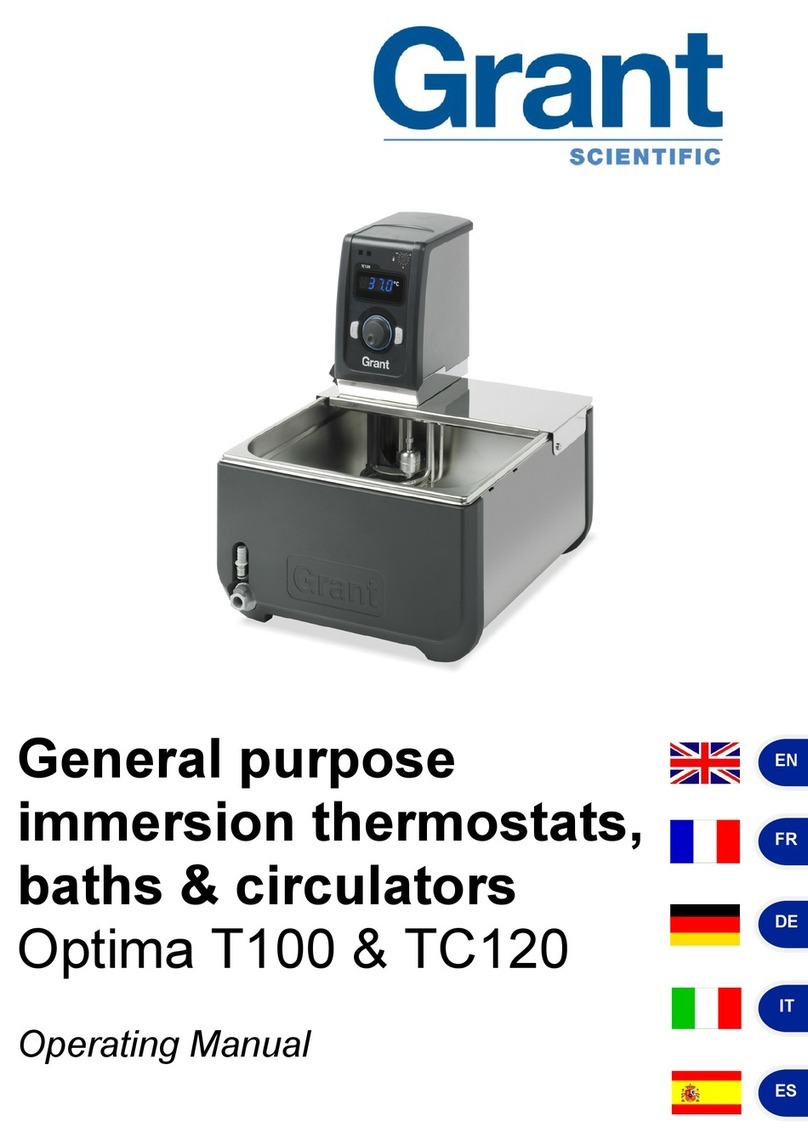
Grant
Grant Optima T100 User manual
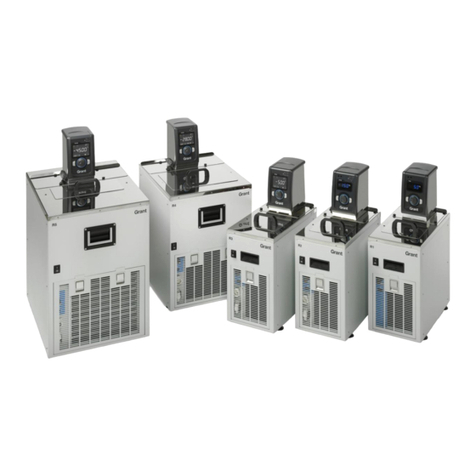
Grant
Grant R Series User manual
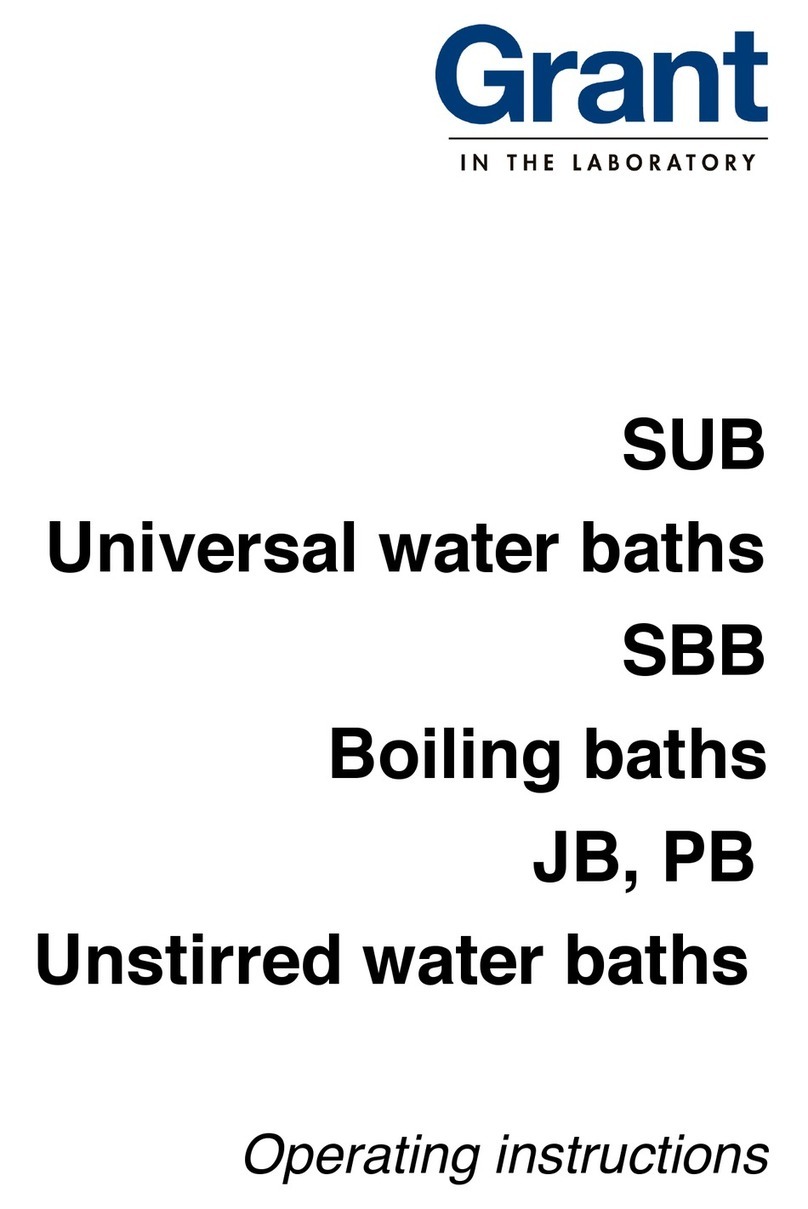
Grant
Grant SUB User manual
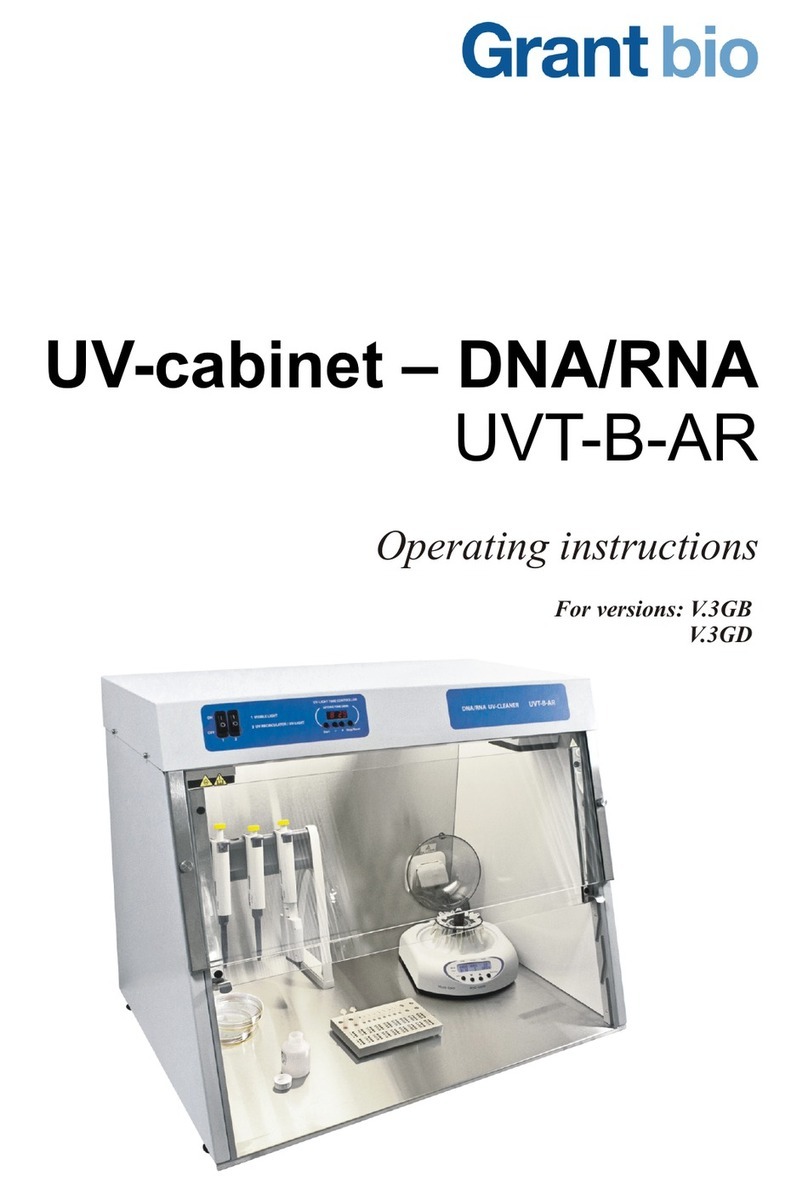
Grant
Grant UVT-B-AR User manual
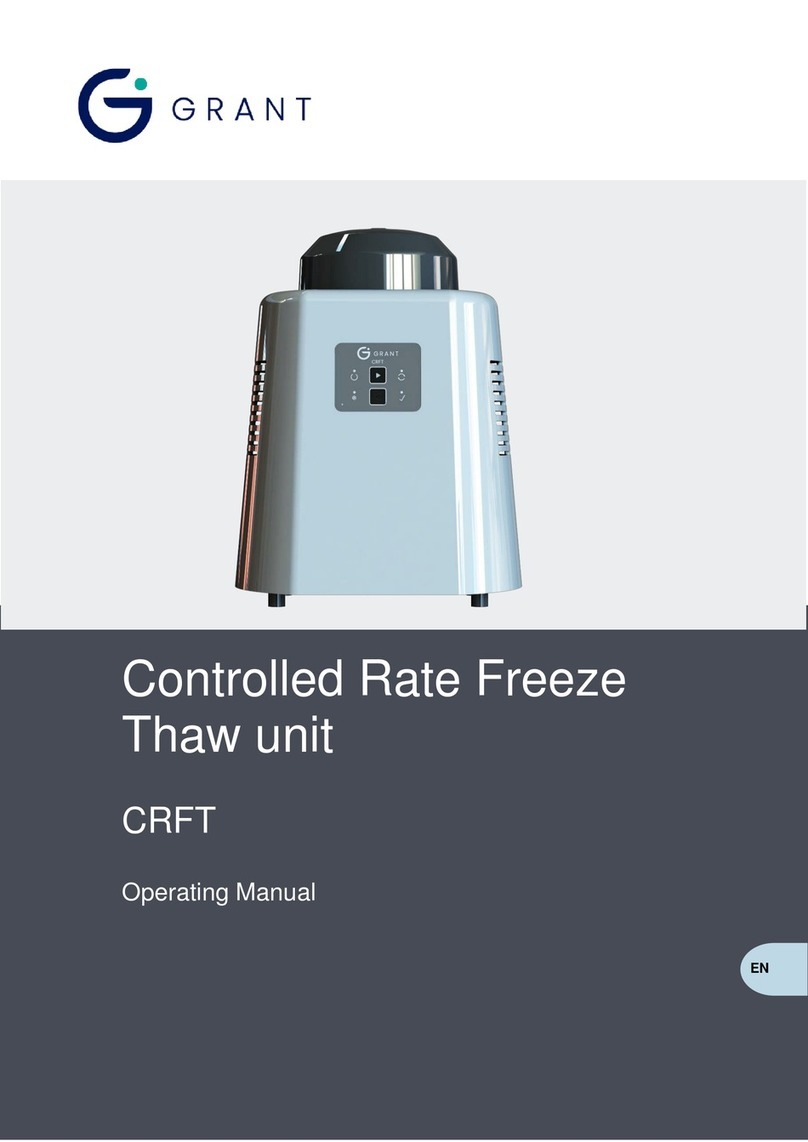
Grant
Grant CRFT User manual
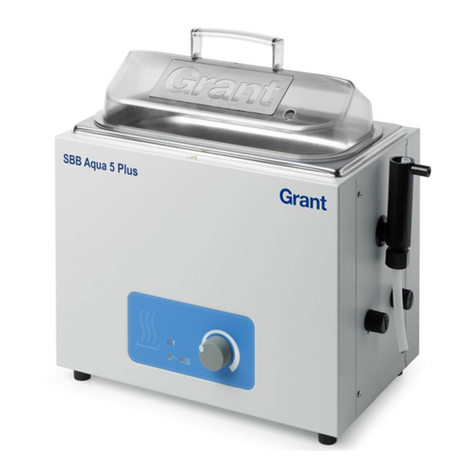
Grant
Grant SUB Aqua Plus User manual

Grant
Grant HPMONOPP210G User guide
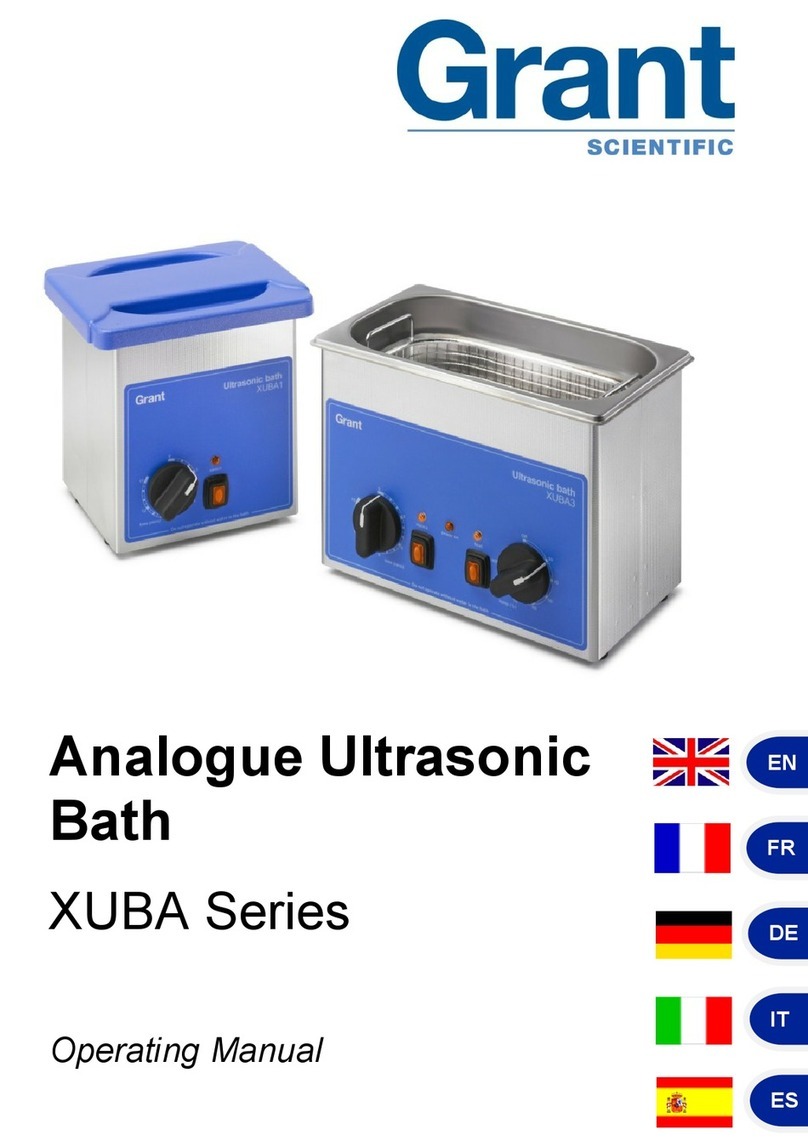
Grant
Grant XUBA Series User manual
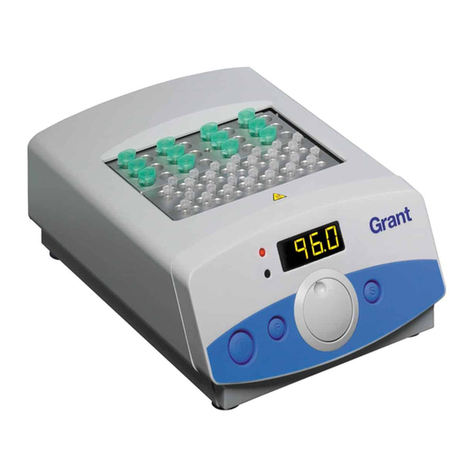
Grant
Grant QBA Series User manual

Grant
Grant SAP Series User manual
